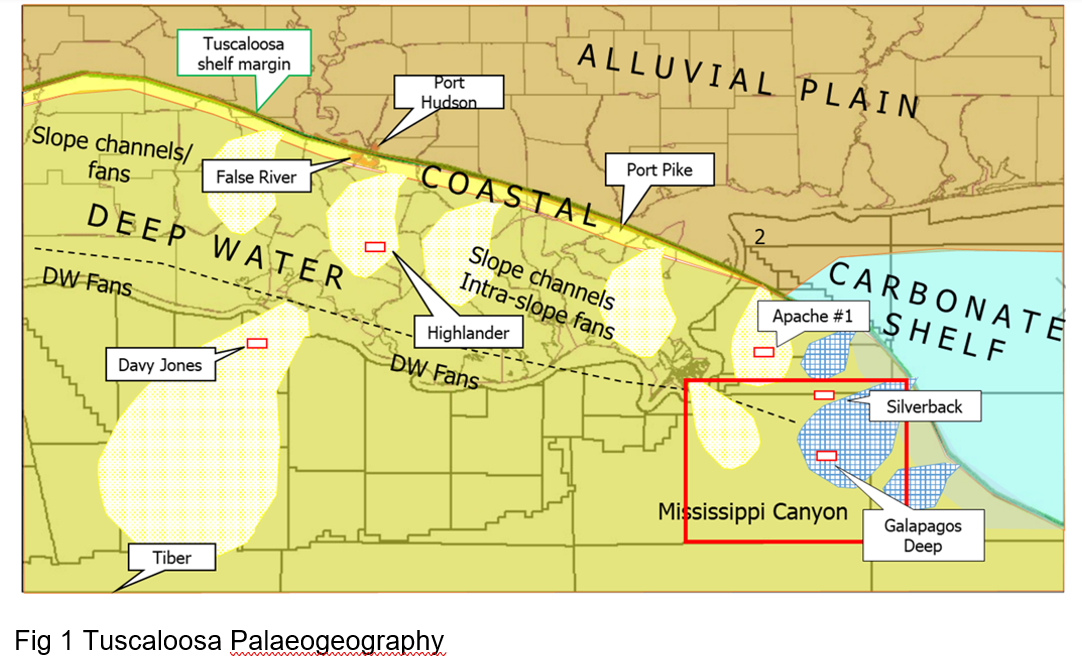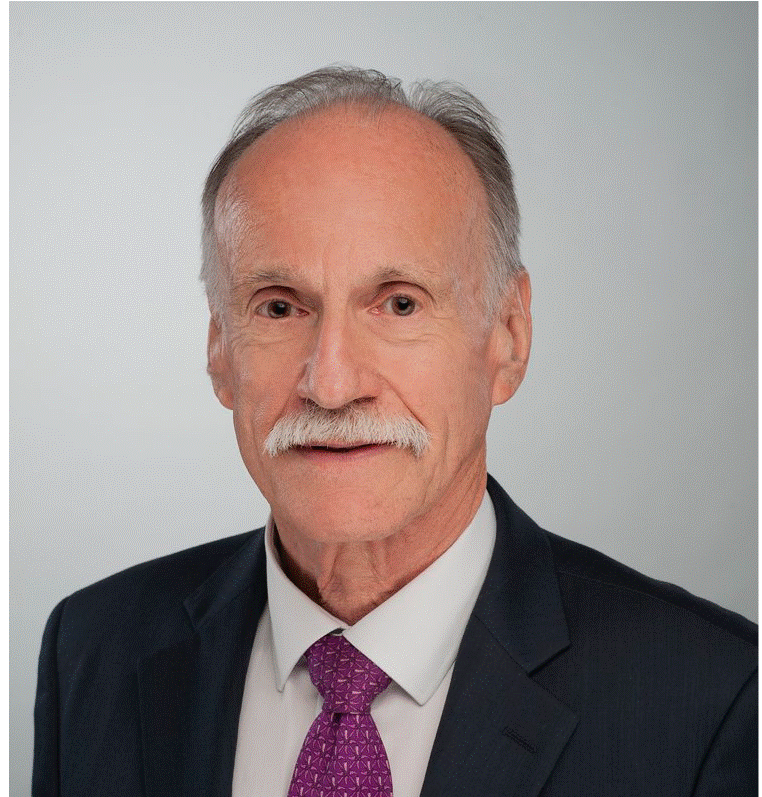HGS Dinner-GOM Shelf Cretaceous New Play
In order to register, please click login to either sign in to an existing account or create a user profile. Go to the HGS home page and login with your user name and password and then return to this page in order to register as a member or guest of a member. For help registering contact the HGS office or email webmaster@hgs.org. Thank you!
Monday, October 16
ROOM • Norris Conference Center • 816 Town and Country Blvd #210
Site Map • Floor Plan
Social Hour 5:30–6:30 pm
Dinner 6:30–7:30 pm, Presentation 7:30- 9:00 pm
Member/Emeritus/ Honorary Life- $65.00 Non-Member- $75.00 Student- $25.00
WALKUPS: $75.00
To guarantee a seat, you must pre-register on the HGS website and pay with a credit card. You may walk up and pay at the door if extra seats are available. Please cancel by phone or email within 24 hours before the event for a refund. Online & pre-registration closes Monday, October 16 at 5:00 a.m.
An Emerging Cretaceous Play in the Eastern Gulf of Mexico -Return to the Shelf
Speaker: Dr. Peter Mullin (Werrus Aquamarine)
Introduction
The Cretaceous is a classical productive play in the onshore Gulf Coast, but while present and proven hydrocarbon-bearing in deepwater clastic facies offshore (Hoorn, 2011), it is generally at great depth, with consequent high costs and limited potential for deliverability. Facies maps previously shown by Moffett (2015), among others, suggest that the principal Cretaceous deepwater clastic fairway is in the Central GOM, where sub-commercial discoveries such as Davy Jones (McMoran) and Tiber Deep (BP) were made. By contrast, the Cretaceous in the much shallower eastern GOM was considered to be dominated by shales and marls.
Recent Drilling Results
A deep subsalt well recently drilled in shallow water Main Pass, testing a salt flank feature, disproved this facies model: the well had reservoir and pay at multiple levels, including 25 net feet of good porosity clastic pay in the Tuscaloosa, albeit significantly off-structure, overlying a very thick high net-to-gross sand package in underlying Cretaceous clastics (Table 1). While the deeper sands have lesser reservoir characteristics, acceptable deliverability is anticipated given the high overpressures and the likelihood of gas charge.
As documented by Snedden (Oral presentation, Geogulf 2021) and Sweet et al (2022) the well lies within a significant Albian to Cenomanian clastic feeder system extending towards the deepwater Mississippi Canyon. In their view, the sands are stacked slope channels and their associated proximal fans.
Two very recent wells drilled by the majors in the eastern Mississippi Canyon have tested the play: Silverback (Chevron) and Galapagos Deep (BP). The Galapagos Deep well encountered primarily carbonates within the Cretaceous. The results of Silverback have not yet been disclosed, but there has been no indication of significant encouragement within what appears to be a large, simple 4-way closure. The nearest deep penetration close to Silverback encountered only carbonates in the package of interest.
Revised Concepts
We contend that the mid-Cretaceous sediment input to the eastern Mississippi Canyon area indeed has low reservoir potential, being dominated by redeposited carbonates derived from the adjacent Florida platform (Fig 1). By contrast, the Main Pass area, and probably extending into the western Mississippi Canyon area, has significant clastic input as amply demonstrated by the Main Pass well. This distribution of sediment types is mirrored in the onshore and adjacent platform areas. Clastics provide effective Tuscaloosa reservoir in Louisiana in fields such as False River and Port Hudson, while to the east the dominant, albeit older, Cretaceous reservoirs are carbonate patch reefs of the James Lime and Andrews Formation.
Werrus has carried out extensive mapping on 3D data in the Main Pass area demonstrating the presence of large simple untested Cretaceous traps in well-imaged turtle features. Fig 2 illustrates an example from Main Pass, showing a large well-defined 4-way closure from Lower Miocene to Aptian level, without any overlying salt which would have provided depth conversion uncertainty. The relatively modest drill depth (20,000ft), the shallow water and the nearby infrastructure make this an attractive high volume target area, already substantially derisked by the recent drilling.
Conclusions
We suggest that future drilling for the Cretaceous plays should be focused on the western portion of Main Pass and Mississippi Canyon, where there is a much better chance of encountering clastic reservoirs throughout this sequence. Within that arena, a test in the shallow water Main Pass would provide a cost-effective test of concept.


Key References:
Horn, B.W., 2011. “Identifying new exploration fairways in the Gulf of Mexico: Deepwater Tuscaloosa/Woodbine Play”, GCACS Transactions, V 61, p 245-256.
Moffett, J.R., 2015. “Discovering the Missing Piece of the Gulf of Mexico Puzzle” Search and Discovery Article #110198.
Sweet, M.L. et al, 2022 “The Early Cretaceous Transition from Carbonate to Siliclastic Deposition in the Dep Waters of the Northern Gulf of Mexico: New Insights from the Keathley Canyon 102 #1 Well”. GCAGS Transactions, V71 (2021), p 58-70.
About the Speaker

Peter Mullin, Vice-President Exploration @ Werrus Aquamarine
Peter Mullin began his career as a seismic interpreter with Shell International, in later years he was posted to Head Office in The Hague as a Shell advisor and later as Exploration Manager for Angola and then Brazil, in charge of very successful deepwater ventures. He later joined Hess, first as Exploration Manager, Brazil; then in a global new ventures review team, and finally as Americas Regional Geology Manager. Mullin left Hess when it went ‘unconventional’ and joined a small start-up (PanAtlantic) as new ventures manager. After PanAtlantic closed down, he became a consultant geologist and economist in both oil and gas and renewables, working for multiple clients in the Gulf of Mexico, Alaska, Mexico, West Africa, and Malaysia among others. He is currently VP of Exploration for Werrus Aquamarine, a Gulf of Mexico shelf player.
Peter Mullin’s 40 years of global experience leads him to conclude that the GOM Super-basin remains under-explored, with undiscovered volume potential on par with the frontier basins but with much lower risk, better terms than most, and relative ease of monetization.
Instructions to Norris Conf. Center:
The Norris Conference Center is next to the Moran Hotel in City Center. if you looking for directions you can try the Moran address 800 Sorella Court Houston Texas 77024. The parking garage for the Norris Center is in front of the Moran hotel. Drive to the third floor, parking is free. There is an entrance to the first floor of the Norris Center on the third-floor parking garage. Look for signs that say "Conference Center."
816 Town & Country Blvd., Suite 210
Houston, TX 77024
United States
| OLD Meetings 2022-2023 | |
| HGS Member | $ 65.00 |
| Non-Member | $ 75.00 |
| Student | $ 65.00 |
|
Event Attachments
|
|
Event Contact
|
|
Committee
|
|
Event Filter Informations
|


